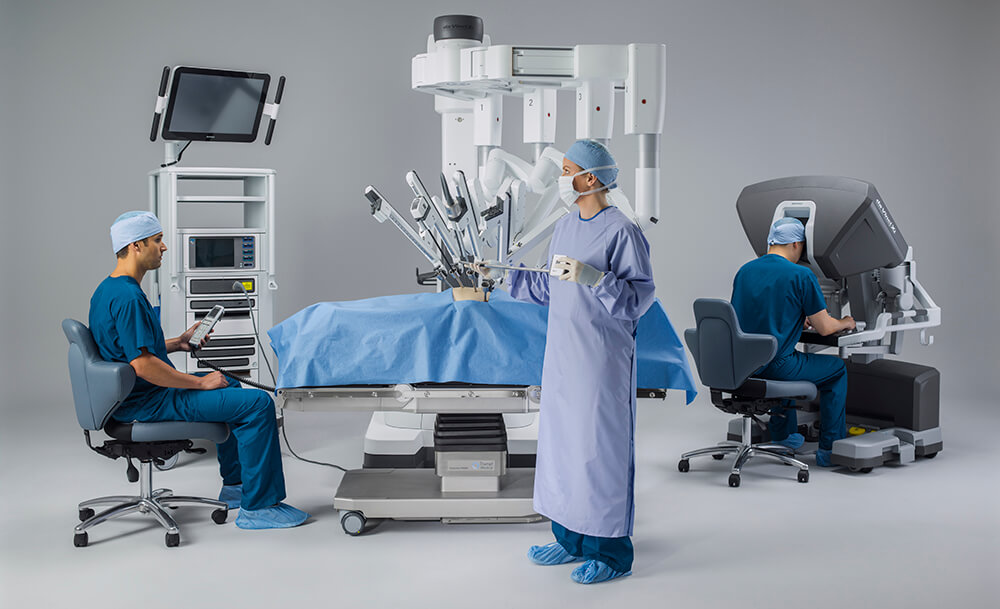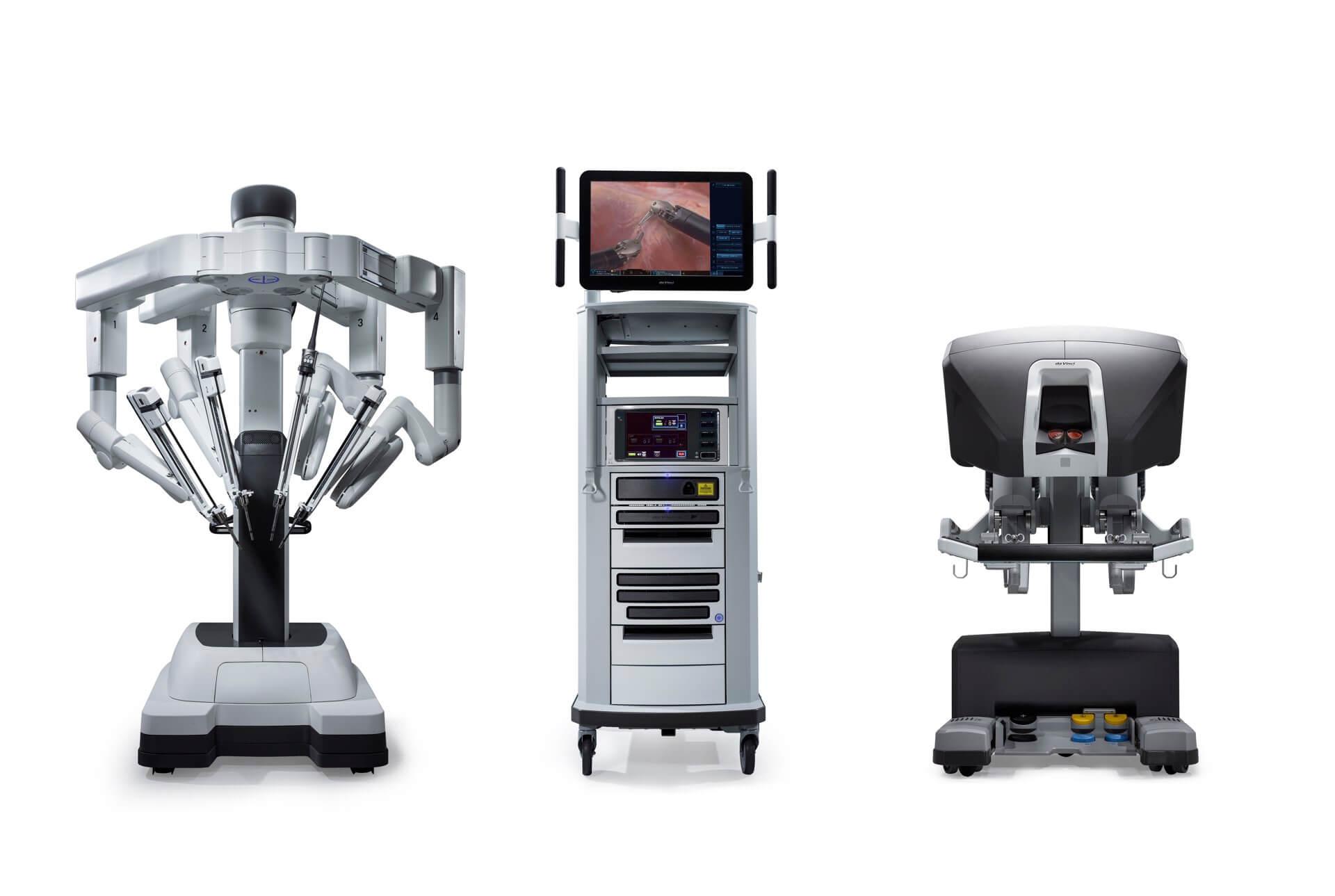Robotic surgery
Robotic instruments have tiny wrist joints which can move like a human hand allowing complex tasks like suturing to be performed in confined spaces and with greater precision.
Robotic-assisted minimally invasive surgery

da Vinci Xi surgical system
We are excited to have access now to the daVinci Xi surgical system which represents the latest generation of this advanced technology.
Your surgeon in control
The term “robotic” often misleads people. Robots don’t perform surgery. Your surgeon performs the surgery with da Vinci by using instruments that they control via a console.
The da Vinci system translates your surgeon’s hand movements at the console in real time, bending and rotating the instruments while performing the procedure.
“Conventional laparoscopic instruments are straight which limits their range of movement. Robotic instruments have tiny wrist joints which can move like a human hand allowing complex tasks like suturing to be performed in confined spaces and with greater precision.”
The da Vinci System has 3 components:
- Surgeon Console: After docking the Surgeon sits at the console and has full control of 3 instruments and a high-definition 3D camera
- Patient Cart: Positioned alongside the bed, the patient cart has robotic arms that hold the camera and instruments which the Surgeon controls from the console
- Vision Cart: Communicates between the components and has the computer processor “brains” of the system
Advantages
- Stable camera compared to being held by a human arm
- 3D high-definition magnified view
- Endowrist instruments provide increased range of movements
- Improves Surgeons dexterity and precision whilst reducing tremor and fatigue
- Better access to confined spaces and parts of the body that are hard to reach
- Intelligent stapling senses tissue thickness and improves correct staple formation

Disadvantages
- Robotic surgery has increased equipment costs which may be passed on to patients by the hospital as they are not all covered by Health Funds
“For complex operations like Gastric Bypass some studies have shown reduced complication rates including leaks and bleeding.”
In summary
Robotic surgery is ideal for performing complex operations on the stomach, oesophagus, pancreas and liver.
- Roux-en-Y Gastric Bypass
- Single Anastomosis Gastric Bypass
- Single Anastomosis Duodenal switch (SIPS)
- Total or Subtotal Gastrectomy
- Liver Resection
- Distal Pancreatectomy
Surgeons performing Robotic Surgery:

